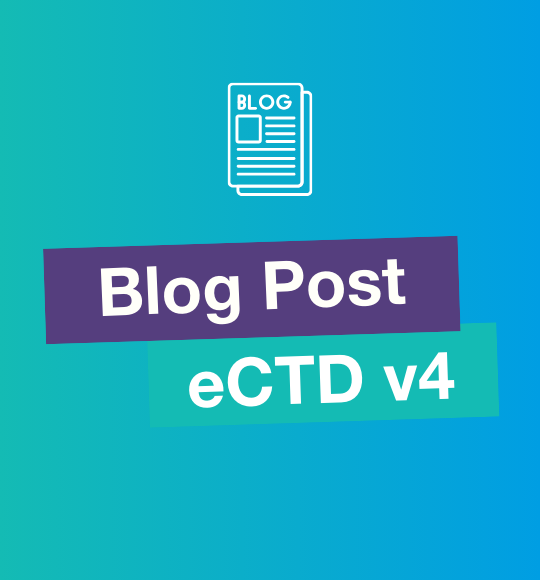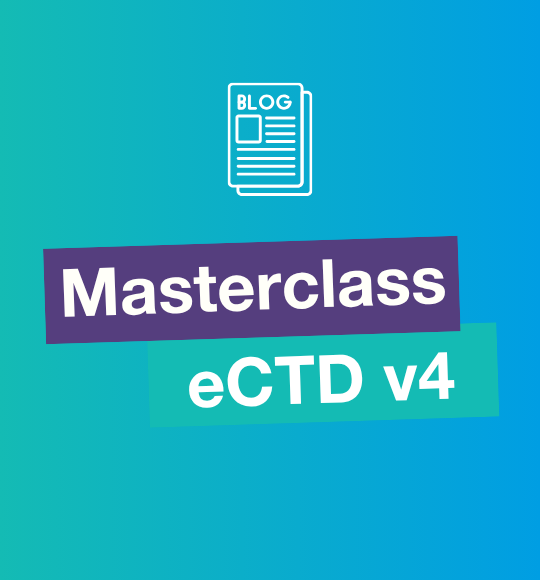
The FDA’s OPDP eCTD is now in effect - what does it mean for you?
Back in 2019, the FDA issued guidance for the requirements of promotional labeling and advertising materials for human prescription drugs. The final guidance has since come into effect as of June 24th, 2021, outlining the requirements for FDA approval of drug and medicinal advertising.
In this blog post, we’ll outline the requirements set out by the final guidance and what life science organizations need to take note of for FDA approval.
What is the OPDP eCTD guidance?
On June 24, 2019, the FDA issued final guidance for the life science industry entitled Providing Regulatory Submissions in Electronic and Non-Electronic Format--Promotional Labeling and Advertising Materials for Human Prescription Drugs.
This final guidance outlines the requirements and recommendations for various types of promotional material submissions for prescription drugs and biological products, including the specific formats needed for use in the electronic common technical document (eCTD) and non-eCTD non-electronic formats.
How does the OPDP eCTD guidance apply to me?
Since coming into effect late in June 2021, pharmaceutical, life science, and third-party companies who represent these organizations must follow the OPDP eCTD guidelines set out by the FDA to get their advertising and marketing materials approved before release. Failing to do so could result in the materials being rejected and barred from use in advertising.
Effective June 24, 2021, firms are required to electronically submit all promotional submissions that fall within the scope of section 745A(a) as specified in this guidance.
What do I need to take note of?
There are a few important things to note for life science organizations looking for FDA approval for their marketing and advertising. Since we cannot cover every aspect of the guidance in a single blog post, we encourage you to read the guidance itself here.
Here are a few of the essential points:
There are six different types of Promotional Material Documents:
- Promotional 2253
- Request For Advisory Launch
- Request for Advisory Non-Launch
- Pre-submission Accelerated Launch
- Pre-submission Accelerated Non-Launch
- Pre-Dissemination Review of Television Ads
However, only Promotional 2253, Pre-submission Accelerated Launch, and Pre-Submission Accelerated Non-Launch are required to be submitted in an eCTD format at this time.
- Applicants must submit at least two files, with each submission
For every submission, applications must include the most current and complete Current Product Labeling (also referred to as Prescribing Information or P-I) and the promotional materials in question.
- Applicants must submit a 2253 form if submitting Promotional 2253, with each submission
For any submission related to a Promotional 2253, a 2253 form must also be included. In the case of additional applications, the FDA Form 2253 must note the lead application and reference an attachment that lists the additional member application numbers. Be sure that you use the latest version of the form, which is named FDA-2253_04-09-2021.
Each file must be placed under the appropriate heading in the eCTD structure:
- If the FDA Form 2253 is included, it must be placed in Section 1.1 (forms section).
- The supplemental member application numbers list must be placed in Section 1.1 (forms section).
- Current Product Labeling must be placed in Section 1.14.6
- Promotional materials must be placed under Section 1.15.2.1
Current Product Labeling can include a PDF file or reference link
The reference link must lead to a previously submitted copy of the current product labeling at the time of dissemination.
Requirements for the Promotional Materials
Each promotional material must be referenced in the FDA Form 2253, if included, and have its own corresponding section in Section 1.15.2.1 in the table of contents within the US Regional File (us-regional.xml).
- A clean copy of the Promotional Materials must be placed under Section 1.15.2.1.1.
- Annotated copy of the Promotional Materials, while not required, but encouraged, must be placed under Section 1.15.2.1.2.
- Annotated labeling must be placed under Section 1.15.2.1.3
- DO NOT submit the Product Labeling under Section 1.15.2.1.3
- A clean copy of the Product Labeling must be placed under Section 1.14.6
- Annotated References must be placed under Section 1.15.2.1.4
General considerations for FDA 2253 submissions
In addition to the above requirements, there are a few considerations that life science companies should take note of if they want to experience a smooth application process.
- Professional and Consumer Materials must be submitted separately
- Do not include any files under section 1.15.1 headings
- Submissions should not include cover letters, correspondence, or Form FDA-356h
- Do not submit duplicate material IDs under the same FDA Form 2253 submission
- The issue date format must be structured in the order of year-month-day - without any non-numeric characters or spaces, for example: (20190115 for January 15, 2019).
Amending your FDA 2253 submission
If a previous submission is missing any materials, you can use an Amendment Submission to submit the missing materials. You can use this option in cases where a material file is omitted, corrupted, or otherwise unreviewable by the FDA.
Each Amendment Submission should include:
- Correspondence stating that it is an amendment.
- The accompanying materials previously missing or omitted.
- A cover letter detailing the reason for submission and contents (refer to section VI-E of the guidance for more details on the cover letter)
- Any clean or non-annotated promotional materials that were excluded from the original application.
As for the placement of these components:
- The cover letter should be placed under Section 1.15.1.8
- Missing materials should be placed under Section 1.15.2.1
- Clean or non-annotated promotional materials should be placed under Section 1.15.2.1.1
Changes to take note of
Since its initial conception in 2019, the FDA 2253 submission has changed. Here are the most important changes to note.
- Hypertext links must only be provided to the specific page where it is referenced - not strictly the specific line.
- Submission history is defined by the format through which the original submission was made - for example, – If a submission is received in eCTD format, all subsequent submissions related to the submission should be made in eCTD
Additional changes were made to the Guidance to address lifecycle management.
- The first update states that if the sponsor has revised previously submitted material, they should use the “replace” function instead of the “new” function. This indicates that the material has been revised. There is no need to resubmit the material.
- The second update concerns your website. When submitting your initial website, you’ll use the “new” operator. Likewise, if you make minor updates, such as revisions to a single section or webpage, you should also submit those revisions using the “new” operator. If the website has been revised substantially, you should then submit and use the “replace” operator, signaling that the website has been updated in its entirety.
Don’t leave your eCTD submissions to chance
The new eCTD requirements for FDA approval can be overwhelming and complicated. If anything, the amount of time and concentration required to complete such a submission accurately may prove challenging for some life science organizations and require a substantial amount of time and resources to achieve.
EXTEDO offers a much simpler way to publish and submit documents for regulatory agency approval and is constantly applying the latest changes and updates to the process. Our suite of products and tools helps automate the process, ensuring your submissions are accurate and complete.
For more on the updated FDA eCTD submission guidelines, view their official statement here or the latest version of the guidance. If you would like to find out more about our solutions, visit our website for more information or contact us today.
.png)


